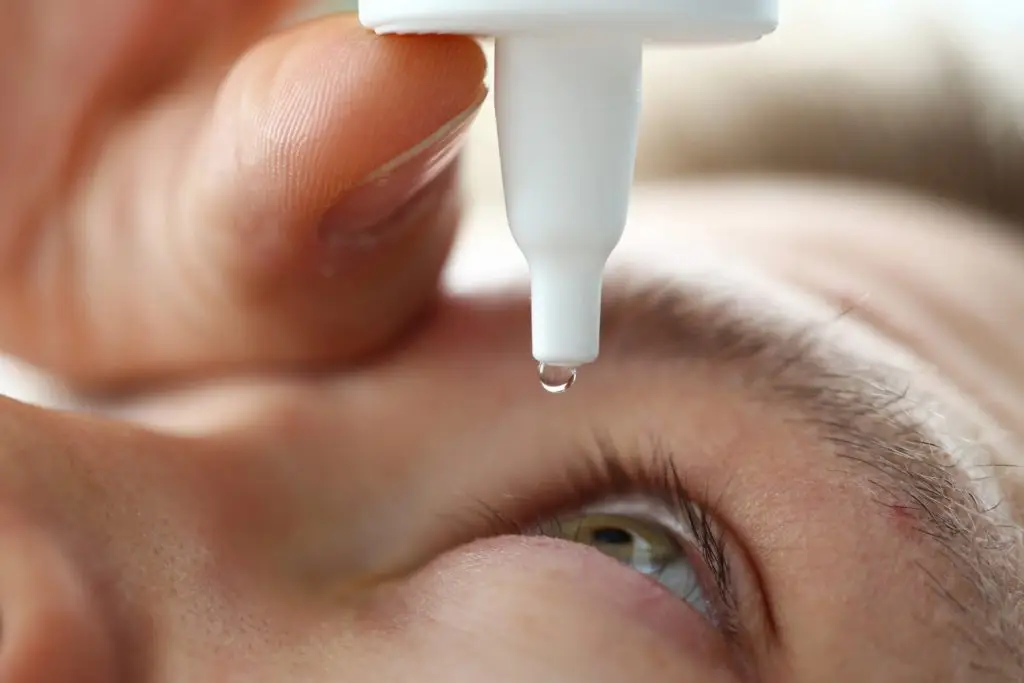
טיפות דמעות – מה זה ולמה משתמשים בהן?
טיפות דמעות הן תמיסות רפואיות או קוסמטיות שמטרתן להקל על
Lacromycin eye drops are a well-known treatment in the field of eye health, mainly due to their effectiveness against bacterial eye infections. These eye drops are known for their ability to quickly relieve symptoms and promote recovery, making them a recommended solution for doctors and patients alike. Here we will provide an in-depth understanding of lacromycin, we will discuss the composition of the drops, their benefits, the instructions for their correct use and much more.

Eye health is a crucial aspect of overall well-being, but is often overlooked until problems arise. Bacterial eye infections, if left untreated, can lead to serious complications including vision impairment. Lacromycin eye drops play a vital role in preventing such adverse outcomes. They not only treat infections but also offer protection against potential bacterial threats to the eyes, which highlights their importance in preventive eye care.
The main active ingredient in Lecomycin is tobramycin, an aminoglycoside antibiotic. Tobramycin works by inhibiting the protein synthesis of bacteria, thus effectively stopping their growth and proliferation. This mechanism of action ensures that the bacterial infection is resolved quickly, and provides relief from symptoms such as redness, itching and discharge.
Upon use, lachromycin targets the affected area directly, offering several advantages over oral antibiotics. Its local effect minimizes systemic absorption, reducing the likelihood of widespread side effects. Tobramycin, being a broad-spectrum antibiotic, is effective against a wide variety of bacteria, making Lakromycin a versatile treatment for various bacterial eye infections. Furthermore, the composition of lacromycin is designed to ensure optimal penetration into the tissues of the eye, while improving its effectiveness in the fight against bacterial pathogens.

Lacromycin eye drops are mainly used to treat bacterial conjunctivitis and other bacterial infections of the eye. Conjunctivitis, commonly known as pink eye, is characterized by inflammation of the conjunctiva, the thin, transparent tissue that covers the white part of the eye and the inside of the eyelid. Symptoms include redness, itching and discharge. Lachromycin effectively fights these symptoms by targeting and eradicating the bacterial infection.
In addition to treating active infections, lacromycin is sometimes used as a preventive measure in situations where there is a high risk of bacterial eye infections. This includes postoperative care, where it is used to prevent infections after eye surgery, and in certain eye injuries where the risk of bacterial infection is increased.
One of the main advantages of lacromycin over other antibiotic eye drops is its broad-spectrum effectiveness. This makes it useful in treating infections caused by a wide variety of bacteria. In addition, its composition is designed to minimize irritation and discomfort during use, making it suitable for patients of all ages, including children.
Like all medicines, chromamycin eye drops can have side effects, although they are usually mild and temporary. The most common side effects include eye irritation, redness and tearing. Some patients may experience blurred vision immediately after use; Therefore, it is recommended to avoid driving or operating heavy machinery until the vision improves.
Although rare, some serious side effects can occur. These include severe allergic reactions, such as swelling of the face, lips or eyelids, and difficulty breathing. In such cases, immediate medical attention is needed. Long-term or repeated use of lecomycin can sometimes lead to a secondary fungal or viral infection of the eye.
Patients should inform their doctor of all medications they are currently taking, as lacromycin can interact with other medications. Special caution is needed when used with other topical ophthalmic medications, as interactions may alter the effectiveness of either medication.
The dosage of chromamycin eye drops usually depends on the severity and type of infection. For standard infections, the usual dose is one or two drops in the affected eye every four hours. In more severe cases, the dose can be increased according to the instructions of a specialist ophthalmologist. It is essential to follow the prescribed dose and not stop the drug prematurely, even if the symptoms improve, to ensure the complete eradication of the infection.
To use lacromycin eye drops safely, patients should wash their hands thoroughly before use. Tilt the head back a little and pull the lower eyelid down to create a small pocket. Hold the dropper over the eye, look up and gently squeeze out a drop. Close the eye for a minute or two, and gently press the inner corner of the eye to prevent the drop from draining. Avoid touching the tip of the dropper on any surface, including the eye itself, to avoid infection.
Chromycin eye drops should be stored at room temperature away from light and moisture. Do not store in the bathroom. Keep the bottle tightly closed when not in use. It is important to check the expiration date on the bottle and throw away any bottle that remains after the end of the treatment or if its expiration date has passed.
While lacromycin is safe for use in patients of all ages, certain precautions should be taken for specific age groups. For infants and young children, care must be taken to administer the correct dose and monitor any side effects. Elderly patients may be more sensitive to the effects of the drug and may require closer monitoring.
There is limited information on the use of lecomycin in pregnant or lactating women. It should be used during pregnancy only if there is a clear need and after consultation with a specialist ophthalmologist. Caution is recommended when administering to nursing mothers, as it is not known whether the drug passes into breast milk.
Patients with existing eye diseases such as glaucoma or dry eye syndrome should consult their doctor before using lecomycin. In addition, those who wear contact lenses should remove them before use and wait at least 15 minutes before reinserting them, as the preservatives in the eye drops can be absorbed into the contact lenses.

Chromycin eye drops have been the subject of various clinical studies, focusing on their efficacy, safety and tolerability. Key findings from these studies include high rates of effectiveness in the treatment of bacterial conjunctivitis, with a significant reduction in symptoms such as redness, swelling and discharge. Studies also highlight the rapid onset of action of lacromycin, often showing improvement in symptoms within the first few days of treatment.
In comparative studies with other antibiotics, lachromycin has demonstrated similar or higher efficacy in the treatment of bacterial eye infections. Research on resistance patterns was also encouraging, showing a low tendency of bacteria to develop resistance to tobramycin, the active ingredient in blecomycin.
Ongoing research is examining the potential of lakromycin in the treatment of more resistant bacterial strains and its use in combination therapies. Recent developments have focused on optimizing the formula to improve patient comfort, such as reducing preservatives that may cause irritation.
Ophthalmologists generally consider lakromycin to be a reliable and effective treatment for bacterial eye infections. They often recommend it for its broad-spectrum activity against a wide variety of bacteria. Experts also appreciate the safety profile of lakromycin, which makes it suitable for patients of all ages, including children and the elderly.
One emphasis among ophthalmologists is the importance of correct use and adherence to the treatment regimen. They emphasize that incorrect use or early discontinuation of treatment may lead to suboptimal results and may contribute to antibiotic resistance.
Patients' experiences with lachromycin were mostly positive. Many report rapid relief of symptoms and comfortable use. Some patients note initial mild discomfort during use, such as temporary tingling, but note that it usually subsides quickly.
Chromycin eye drops are widely available in many countries around the world. However, availability and brand names where they are sold can vary. In some areas, lacromycin may be available over the counter, while in others, a prescription is required. This bar is essential for international travelers as they should be aware of these differences and prepare accordingly if they rely on these eye drops for continued care.
The cost of lakromycin can vary significantly depending on the country and the health system. In countries with universal health care or comprehensive insurance coverage, patients may find lakromycin fairly affordable or even free. Conversely, in areas without such benefits, the cost can be a barrier for some patients. Generic versions of lacromycin, containing the same active ingredient (Tobramycin), are often available at a lower cost and offer a viable alternative.

1. Can lecomycin be used to treat all types of eye infections?
Lachromycin is effective against bacterial eye infections but is not suitable for viral or fungal infections. It is important to consult an ophthalmologist specialist for a correct diagnosis before using chloramycin.
2. How long does it take for Chromycin to work?
Patients often notice an improvement in symptoms within the first 24 to 48 hours of treatment. However, it is important to complete the full course of treatment as prescribed.
3. Can lekromycin cause allergic reactions?
Although rare, allergic reactions to lecomycin can occur. Symptoms can include rash, itching, swelling, severe dizziness and breathing problems. If these occur, seek medical attention immediately.
4. Is it safe to drive or operate machinery after using lecomycin?
Lacromycin may cause temporary blurred vision. It is recommended to avoid driving or operating heavy machinery until the vision improves.
5. Can children use Chromycin eye drops?
Yes, lacromycin is safe for use in children, but it must be given under adult supervision and according to the prescribed dose.
Lacromycin eye drops represent a significant advance in the treatment of bacterial eye infections, offering a combination of efficacy, safety and ease of use. The clinical studies conducted so far reinforce its role as a mainstay in eye antibacterial treatment. Although it is widely available and generally well tolerated, understanding its proper use, possible side effects, and patient suitability is essential to achieving the best results. The future of lakromycin, with ongoing research and development, promises further progress in treating eye infections more effectively and with fewer side effects. As with any medication, consultation with healthcare professionals is essential for safe and effective treatment

טיפות דמעות הן תמיסות רפואיות או קוסמטיות שמטרתן להקל על

ויטמין C הוא אחד הוויטמינים החיוניים ביותר לבריאות העיניים, הודות

מרכז מומחים לאבחון וטיפול מתקדם בתסמונת העין היבשה ומחלות פני שטח העין















